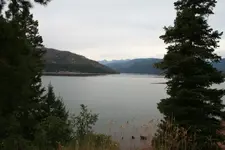Jim Hatt
Full Member
Springfield said:Cubfan64 said:I don't know how realistic it is, but is there a possibility that despite all the cleaning that the stones have likely undertaken that there may be microscopic "contaminants" from whatever implement was used to cut the many lines?
.....
I wonder about what effect the releasing agent and latex, each applied numerous times as I understand from Jim's description above, may have had with whatever residues may have been in the grooves?
Good morning Springfield.
The releasing agent I spoke of was probably not necessary, when the initial molds were made using the original stones. I had to use it when I made my molds because the stones (a set of Richard Robinson's reproductions) I used to make my molds were painted. (That btw, is the reason I called my reproductions "second generation copies". (like a copy of a zerox copy) If I had not used the releasing agent on my stones, it may have removed all the paint (applied by Robinson) when the latex was removed from the stones. That releasing agent was only applied once (before the first coat of latex was applied).
Irregardless of all that... The chemical testing I have in mind, should not be affected by any residual releasing agent, that may have been used (if applicable) on the original stones when Robinson made the first generation copies. The testing I have in mind will be of a material below the surface of the stone being tested. I did not intend for this testing to be a mystery, or puzzle to confuse anybody, when I brought it up. The fact is... I do not know how to perform the proposed chemical test myself, so I cannot explain it to anyone. However I have a lot of faith that a Chemist will be able to do it, if permission is granted by the Mineral and Mining Museum, and the funds are raised, to have the test performed. That permission is required because, more than likely, there will be some surface disturbance required to obtain samples of the material to be tested. This could be considered as a form of destructive analysis, which could result in a permanent scar on the surface being tested.
As I told Joe. The whole story should be made public before too long, but I will leave that up to the timing and discretion of the Board of Directors at the Superstition Mountain Historical Society. I am not going to try to predict what they, or the Mineral & Mining Museum might decide to do, or their reasoning behind that decision. I am sure that whatever they decide to do, they will let me know, and have no problem with me passing that information on to anyone interested.
In the mean time... I have a good deal of confidence that the test will eventually be performed. The SMHS Board Member that I spoke with about it, appeared to be heavily in favor of having the test done, and already had another Board Member in mind to set it up and oversee it.
All we can do right now is keep our fingers crossed.
Jim




